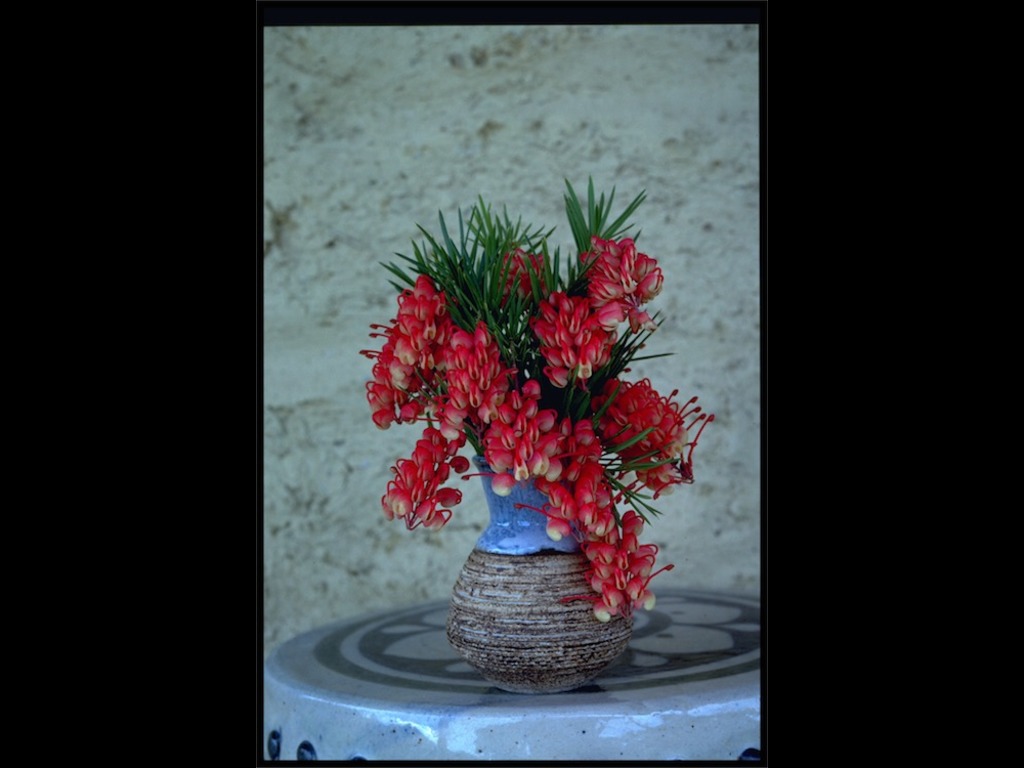Grevillea rosmarinifolia 'Rosy Posy'
- File Number
- 386
- ACRA Field Book Number
- 258
- Registration Date
- 07/10/1990
- Application Received
- 01/09/1987
- Family
- Proteaceae
- Cultivar Name
- Grevillea rosmarinifolia 'Rosy Posy'
- Origin
- Grevillea 'Rosy Posy' is a form of Grevillea rosmarinifolia with large racemes of flowers. The form was selected for further propagation by Austraflora Nurseries of Montrose, Victoria. The name is derived from the flower colour (rosy) and bunches of flowers (posy). The cultivar was received by the Authority in September 1987. Registration was applied for by Austraflora Nurseries of Montrose, Victoria.
- Characteristics
- This cultivar is a form of the dark green, fine leaved variety of G. rosmarinifolia. It grows to ca. 1.5m tall by 1.5m wide. The leaves are linear 30-45 mm long by 1mm wide and have a mucronate point. Leaves are glabrous above and below with very occasional silky hairs on the mid-vein of the leaf on the underside. The branchlets are covered with scattered silky hairs. The flowers are ca. 20mm long. The perianth is a rosy pink with a yellow tip. The style is a deep pink to red. The racemes are 40 to 50mm long and densely packed with flowers. Flowers can be found throughout the year with the main flowering season being late winter to early spring. Diagnosis: G. rosmarinifolia varies greatly over its range. Grevillea 'Rosy Posy' is distinguished by its exceptionally large racemes of flowers.
- Cultivation
- G. rosmarinifolia in all its forms is a very hardy, reliable and adaptable species, growing well in most well drained soils and aspects. It responds well to heavy pruning and is drought tolerant and frost hardy. The cultivar must be grown by vegetative means to preserve the cultivar form.
- Publication
- Elliot, W.R. & Jones, D.L. (1990), Encyclopaedia of Australian plants suitable for cultivation 5: 104
- Colour Coding
- RHS Colour Chart 1966.perianth: red group 51Aperianth lobe: yellow group 11B.style: red group 51A.
- Propagation
- Cuttings from semi-firm new growth
- Applicant Name
- Austraflora Nursery
- Uses
- As part of a mass planting or mixed in a shrubbery, or as a spectacular feature plant. Attracts nectar feeding birds.
- Availability
- Specialist native plant nurseries
- ANBG Accession Numbers
- ACC386; ACRA258; CBG8703130.
- NSL ID
- -


